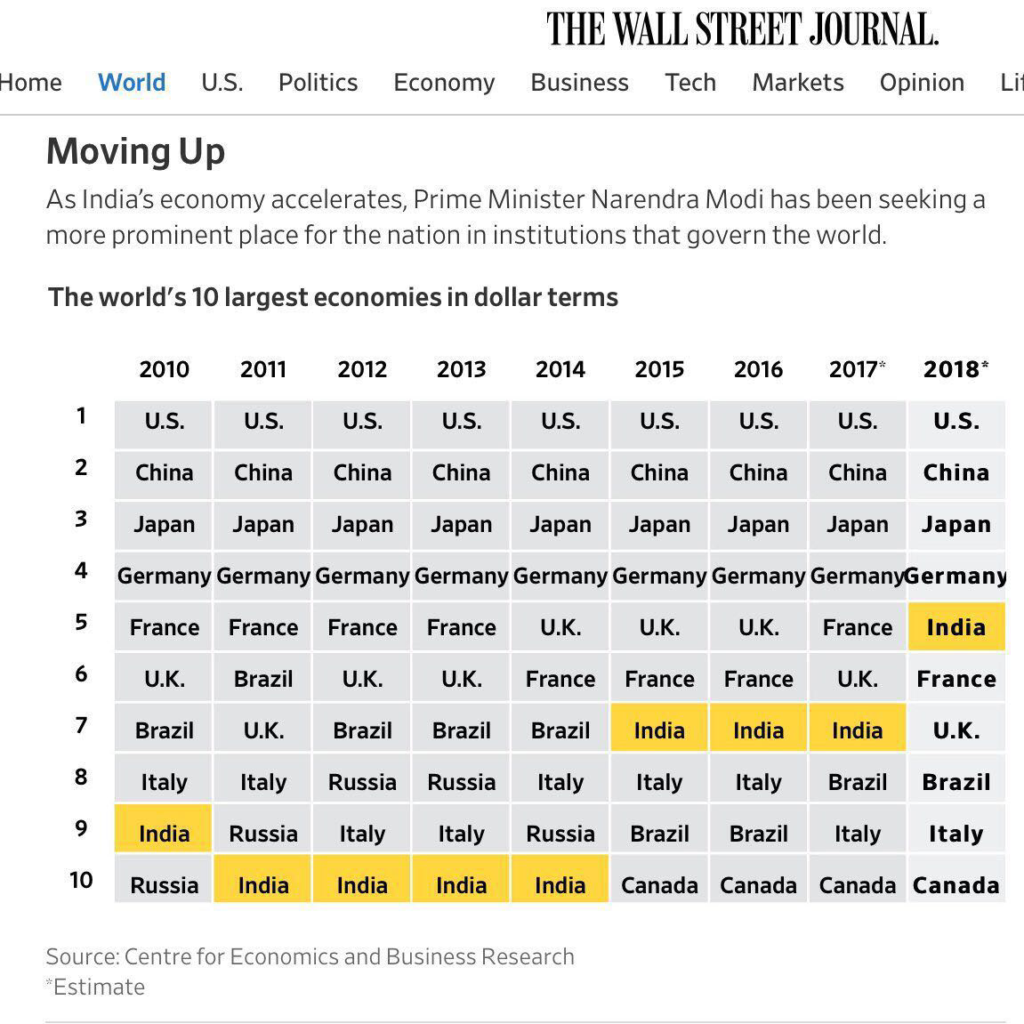Hi Everyone,

No, I can’t levitate.
Namaste from India! We came, we saw, we conquered! Not exactly….but we moved and have settled in the world’s largest democracy. Thanks to professional movers, good airline service and support received from my employer in transit accommodation, I couldn’t have asked for a smoother move!
I can’t help but wonder about how integrated the world and transportation services are that people are able to move 10,000 miles and things fall in line like ordering a drive-through breakfast at your local McDonald’s. But that’s how the world moves these days.
After settling in, I wanted to get assimilated in my adopted residence. Food is a good place to start.
We use yoghurt quite a lot in our meals. So, I ventured out in search of a plain yoghurt. First, nobody in the nearby small stores I visited understood what yoghurt was. The rare store that understood pointed me to the flavored, single-serve variety (from well-known brands) that I wasn’t looking for. The most common name for plain yoghurt here is curd.

The curd (note the capital D) that tasted heavenly!
I bought this half-a-litre plastic-sealed package weighing a little over a pound of yoghurt for just 34 rupees, that is about $0.52.
The yoghurt was simply so delicious that I just had to understand how they make it. My analytical mind wanted to get deeper into the supply chain behind this delicious product here. I found out two main reasons why the yoghurt here tastes so good.
First, it is made fresh and they do daily deliveries to area stores. Though it has a claimed shelf-life of 15 days, hardly anyone consumes it so late after it is made.
The Indian consumer habit is to make yoghurt everyday using boiled milk mixed with a teaspoon or so of the previous day’s yoghurt in it to get the process started. In 6 hours or so (most do it overnight), a fresh batch of home-made yoghurt is ready for consumption!
Second, they use a bacterial strain called acidophilus to curdle the milk. I am told that the strain used in tropical countries like India is different from the bacterial strain used in North America to make yoghurt. This gives a different consistency and flavor to the yoghurt. Whatever it is, go acidophilus!
OK, I can hear you go Damn, get off your yoghurt obsession! Move on.
This country uses WhatsApp as much as Americans use toilet paper.
Everybody is on it. Almost every local merchant or small service provider wanted to get my mobile number so they could ‘WhatsApp me’ on essential goods to be bought or services to be delivered. To give you an idea of how pervasive this is, my car driver has started sending me inspirational ‘Good Morning’ messages on WhatsApp every day! As cute as it felt initially, I am starting to get tired of it.
Speaking of toilet paper, that isn’t the primary choice here. My family is getting used to the “health faucet”, which is a flexible bidet that gushes pressurized water for cleaning your ‘posterior orifice’, after you complete the ‘evacuation’. The soft jet of water hitting the right spot feels uniquely comforting in a way. Sorry, I wanted to say this in the least offensive way possible. 😊
In short order, thanks to WhatsApp, we were hooked up with home-delivery grocery stores, furniture stores, appliance outlets, and apps/websites for utility payment services for phone, electric, cooking gas etc. Even banks come to your home to get your account opened.

Navigating the roads to serve you better!
All the magic happens without you running around because of the huge number of “two-wheelers” (scooters, bikes) on Indian roads. Most of them are employees delivering products or services for customers, and those simply commuting to their workplaces.
The thing that strikes most people who spend any time in India is that there is constant activity everywhere. People are always on the move, wanting to make a better life for themselves and their families. They are friendly but always in a hurry. Perhaps that growth is understandable given the data that Wall Street Journal shared recently:
This is the world’s fastest growth market for cars, even luxury cars – BMW and Mercedes have had their best percentage growth in India in recent years compared to any other country. I do wonder where will all those cars go, given the already congested roads.
Of course, there is still a lot of poverty but the middle class is booming and the rich are getting richer. Rapid economic growth is driving people at the higher levels of income towards global standards of affluence. Most of the world’s major airlines each have 20+ daily flights from major Indian cities to the rest of the world, and most of them are nearly full as I have often observed.
Inflation is also relatively high (at 6-7%), so this is a difficult place for retirees because fixed income interest rates (at 7% or less) barely keep up with inflation. Even relatively better off retirees on fixed income who are risk-averse (meaning low allocation to stocks) are feeling the pinch, from my anecdotal conversations here.
This issue is further compounded for retirees living on U.S. social security or U.K. pension here. The slowly appreciating Indian currency against the US dollar and British Pound, combined with low COL raises in their dollar or pound pensions have served a double whammy for such retired folks in the last 12 months.
This kind of problem, of course, is universal as the world’s major economies have had to endure low interest rates for several years now. These nearly zero interest rates is what drove many U.S. and European fixed income investors towards higher income opportunities in their own home countries – so, they bought more equities, REITs and dividend growth stocks over the last 5 years, driving up valuations (though the February correction has brought back some sanity.)

It doesn’t take a hardened critic to see the obvious disparity here.
Cities in India are growth magnets. They are constantly expanding, putting pressure on infrastructure and civic services. The early investors in Indian real estate are rich beyond their dreams. Broadly increasing affluence targets similar high-quality property in limited desirable neighborhoods in India’s mega-cities.
And the money is also spilling over to equity markets – India’s stock market had a tremendous year in 2017, gaining 35% in US dollar terms. You could’ve thrown a dart at any Indian company stock last year and it would’ve gone up in double digits (some in triple digits!).
While health care costs are rising in India, they are still a far cry from the costs in the U.S. I have examined one case in detail in my previous article. Basic medicines are very inexpensive here, mainly due to government mandate to keep them affordable for the low income majority.
Apply 5-10 X lower costs compared to U.S. in just about every category of health care and hospitalization, and then you will understand what I mean. Indians may worry about the nearly 10% annual inflation in healthcare costs, but they are coming off a different base than what Americans have had to deal with.
While the rural areas and small towns of India have poor health facilities and marginal health care, the cities have well-qualified doctors with services that deliver excellent value-for-money, at least from the perspective of Americans used to paying outrageous out-of-pocket costs. This may be a reason why most middle-class Indians self-insure.
While we are doing well in the ‘settling down’ phase here, there is one thing that frustrates me a lot in India. No, it’s not traffic or crowds that gets a lot of media attention about India. These were known factors going in for us, so they don’t surprise us.
It’s the darn Internet! Internet speeds are so slow here that what passes for so-called ‘home broadband’ in India reminds me of my old 56K modem that I used to have in my graduate school days. Sure, I pay only $20 a month for it, but at that pathetic speed, any bill to pay at all seems atrocious. Even at $50 a month, the speeds are only marginally better. I sure miss my unlimited broadband back in Texas.
The wealth disparity is so obvious here, and yet many go about their daily lives focused on improving their lot in life. The first lesson for Americans like me is not to take prosperity for granted.
Most readers of this blog are lucky to be living in countries with strong minimum wage laws, developed infrastructure and civic services, legislated safety nets, and a high regard for personal liberty. While personal liberty is fairly strong in India as well, there are structural issues that prevent millions of people from reaching the level of basic living standard that we take for granted in the United States.
More to come later. Stay tuned!
Raman Venkatesh is the founder of Ten Factorial Rocks. Raman is a ‘Gen X’ corporate executive in his mid 40’s. In addition to having a Ph.D. in engineering, he has worked in almost all continents of the world. Ten Factorial Rocks (TFR) was created to chronicle his journey towards retirement while sharing his views on the absurdities and pitfalls along the way. The name was taken from the mathematical function 10! (ten factorial) which is equal to 10 x 9 x 8 x 7 x 6 x 5 x 4 x 3 x 2 x 1 = 3,628,800.


24 comments on “Curdled With The Growing Indian Economy”